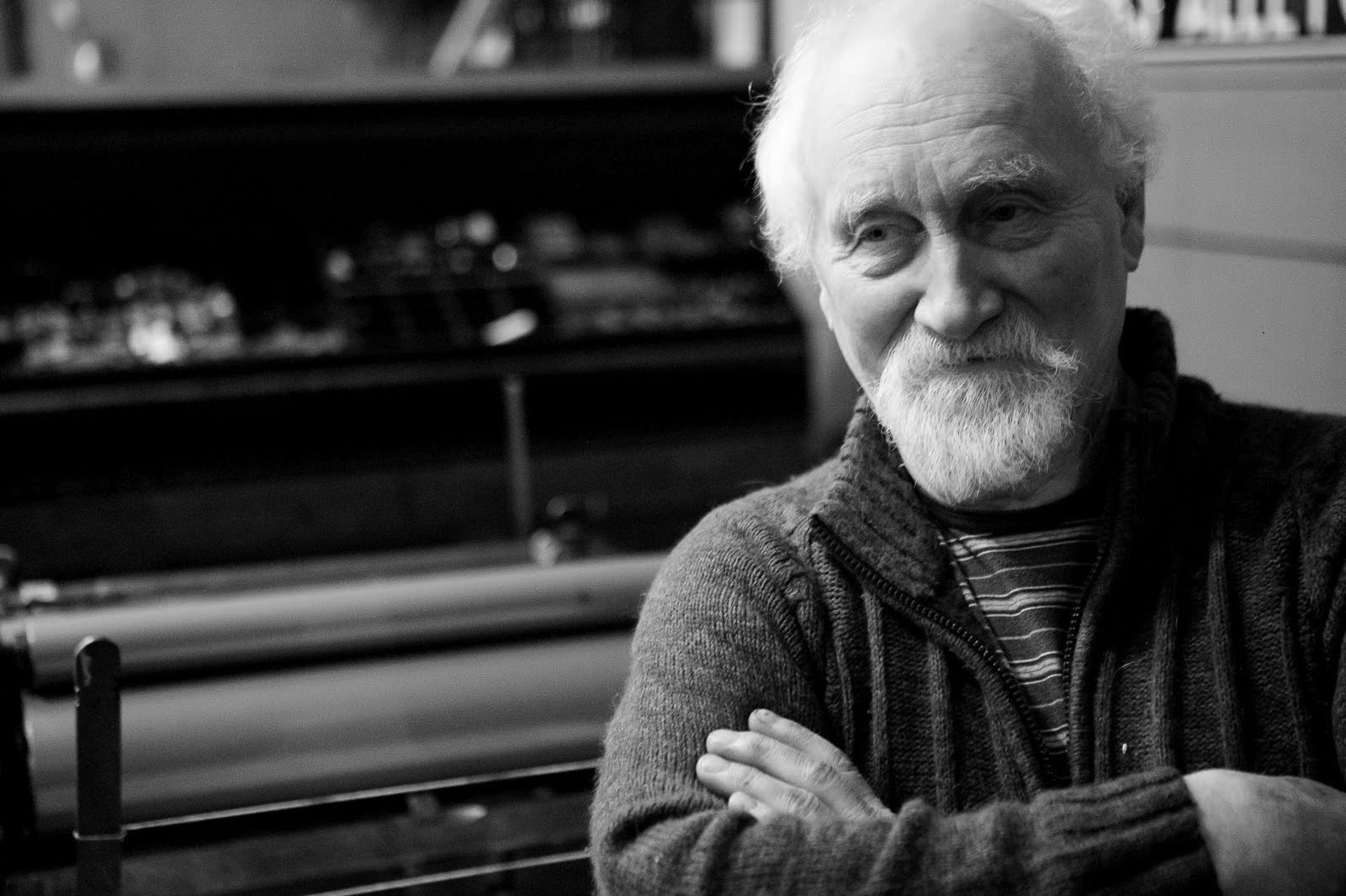Typecasting Transplanting a Pie Tree to the Okanagan

This image, of Jim at his Thompson type caster in his shop in New Westinster, is taken from Ryan Mah's long-awaited documentary From Lead to Gold.
Another film on Jim, available from P22, is Making Faces: Metal Type in the 21st Century.
For a sampling of some of Jim's digital faces, try here.
¶ January 2010 marked the passing of a Canadian master in the world of type design and letterpress. Jim Rimmer, proprietor of the Pie Tree Press and Typefoundry in New Westminster, BC, was one of the last practitioners creating custom typefaces in metal for hand-set and composition casting. In his basement shop, Jim drew, cut, engraved and cast original designs used in the printing of his fine press editions, including his magnum opus and final work, The Adventures of Tom Sawer, for which Jim also did the linocuts (many in up to 10 colours) and the binding. Far more than his considerable achievements at the Pie Tree, however, Jim was also a vital and important member of the letterpress community, and one of the most gracious and generous men one could ever meet.
¶ In the years preceding Jim's death, I made a number of visits to his workshop, where we talked for hours while he indulged my eager curiosity, walking me around the shop and explaining and demonstrating his various and incredible machines, including two pantographs (used for egraving matrices with which to cast type), and two Monotype casters (a Comp. and SuperCaster), along with a wide range of finishing machines, mats, moulds and keybars - not to mention a large print shop with a Reprex flatbed and Colts Armory platen press.


Rimmer at his Taylor-Hobson pantograph (still from Rich Keglar's film: Making Faces), and working drawings of a new type by Jim Rimmer, unfinished at his death, but rumoured to be released digitally one day by Rich Kegler.
¶ It is difficult to explain Jim's legacy. A typographer and illustrator his entire adult life, Jim began setting type in the early 50s and, over more than a half-century, became the most significant and influential type designer Canada has ever produced. And by influential I mean to suggest that his impact, directly and indirectly, all but single-handedly carried on a 500-year long tradition of creating and casting original metal types.
¶ My relationship with Jim was far too brief, but in the last year of his life we began working together to find a caster for me to set up here in Vernon. Unfortunately this search yielded little result, but my enthusiasm and Jim's encouragement kept that goal in mind and my intention to see it through all the more intense.

